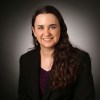Some students frustrated as local colleges reduce in-person classes
Southern Nevada colleges and universities are switching more in-person classes to a remote format for the fall semester amid high COVID-19 metrics, frustrating some students who were counting on a nearly full return to campus.
UNLV, College of Southern Nevada and Nevada State College all were planning to hold primarily in-person classes this fall after conducting the vast majority of classes remotely since March 2020 due to the COVID-19 pandemic.
But with the new semester scheduled to begin Monday at UNLV and Nevada State College, and Aug. 30 at College of Southern Nevada, all three schools are scaling back their goals.
UNLV, which has more than 30,000 students, plans to offer about 60 percent of classes in person and 40 percent remotely for fall semester, spokesman Tony Allen said via email.
Originally, the intent was to have 80 percent of classes in person, compared to the typical 90 percent prior to the pandemic, he said.
“The recent surge of COVID-19 infections in our community has driven several changes just as the new semester begins,” UNLV President Keith Whitfield and Executive Vice President/Provost Chris Heavey said in a Tuesday message to students.
Offering more classes remotely will “protect vulnerable students and faculty,” they added.
Schedule changes were being finalized on Wednesday.
Students won’t be charged a distance education fee or other additional fees if their class changes from in-person to remote synchronous instruction, Whitfield and Heavey said, indicating that the online classes will include some live instruction or interaction and students won’t be working online solely at their own pace.
UNLV asked departments not to classify courses as asynchronous because that would trigger a fee for students, Laurel Pritchard, vice provost of undergraduate education, said Thursday.
The school hasn’t identified any cases where that happened, she said.
If the school finds cases where the fee was added, it will be removed, Heavey said Thursday.
Conversations about switching more classes to remote began in early July after UNLV officials heard feedback from students who wanted more opportunities for remote learning, including those who weren’t ready to come back to campus yet, Heavey said.
Also, high COVID-19 case numbers in the community “started making us consider whether we had the right balance,” he said.
At this point, he added, “We’re feeling like we’re in a reasonably good situation” to meet the needs of students and faculty members. But he acknowledged that the balance won’t please everyone.
Peter Grema, a 21-year-old UNLV student who’s studying economics and public policy, is one of those who is not happy with the changes.
Grema, a senior who is on track to graduate in spring 2022, is taking five classes during fall semester. Originally, only one was scheduled to be remote, but now three will be fully remote and one will be a hybrid mix of in-person and remote learning.
After enduring a year of remote instruction along with his classmates, Grema said he starting finding out one class at a time in mid-July that their formats were switching to remote.
“Quite frankly, I’m frustrated,” he said.
Grema said he doesn’t do as well with online classes and that many of his classmates feel the same way. He was particularly looking forward to attending an economics class he’s taking in person, but found out two weeks ago it will now be held remotely.
“It’s just not the same experience if you’re taking it online,” he said
But Grema doesn’t blame UNLV administrators, saying the Nevada System of Higher Education’s Board of Regents hasn’t shown any leadership by trying to keep as many classes in person as possible or acting on a COVID-19 vaccination mandate for students.
What CSN, NSC are doing
College of Southern Nevada, a community college with three Las Vegas Valley campuses and more than 30,000 students, plans to offer about 37 percent of its fall class sections fully in person, 8 percent in a hybrid model and 55 percent fully online.
Vice President of Academic Affairs James McCoy sad the college is ready to pivot to fully online instruction, if needed, due to the pandemic.
“We’re not blind to the current COVID environment,” he said.
The college is making “modest pivots” with the format of fall semester classes and is responding as it watches student preferences, McCoy said. That included, in some cases, adding more in-person sections.
If a student purposely signed up for an in-person class and there isn’t a capacity challenge with that section, “we tried to preserve that,” he said.
Before the pandemic, the college had about 60 percent of its total offerings in person.
Nevada State College, which has more than 7,000 students in Henderson, is holding most classes remotely for fall semester.
About 78 percent of class sections will be offered remotely. That compares with 89 percent in fall 2020.
Due to the increase in COVID-19 cases communitywide, a small number of classes were switched from an in-person to remote format — a change that happened this summer.
“We haven’t slipped back too much,” said Vickie Shields, provost and executive vice president.
Pre-pandemic, the college was offering about 23 percent of classes remotely.
University of Nevada, Reno, which has about 20,000 students, is only holding 6 percent of its classes online for fall semester, university spokesman Scott Walquist said via email.
Contact Julie Wootton-Greener at jgreener@reviewjournal.com or 702-387-2921. Follow @julieswootton on Twitter.











































